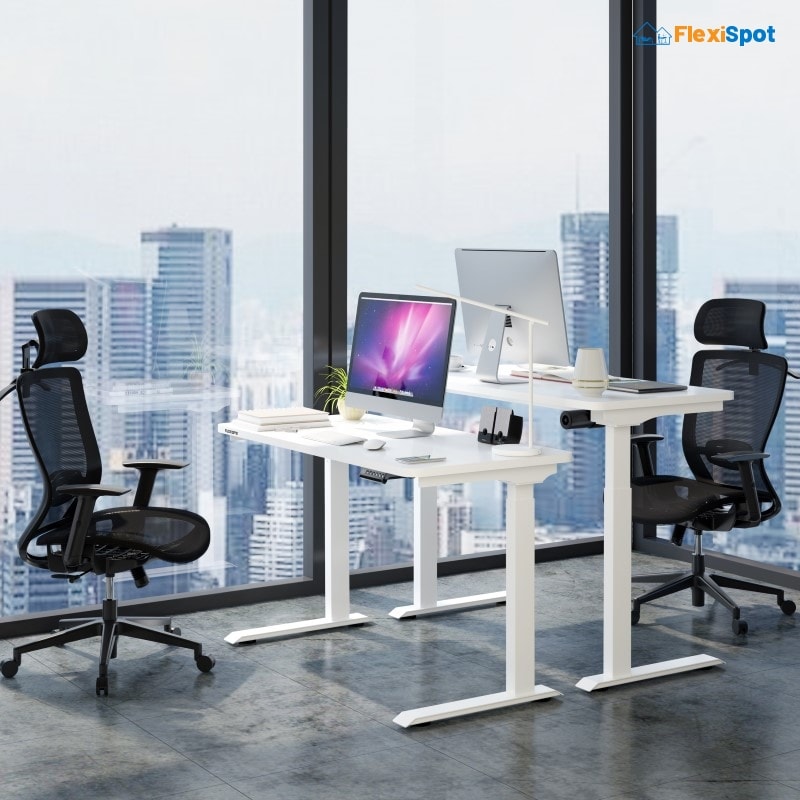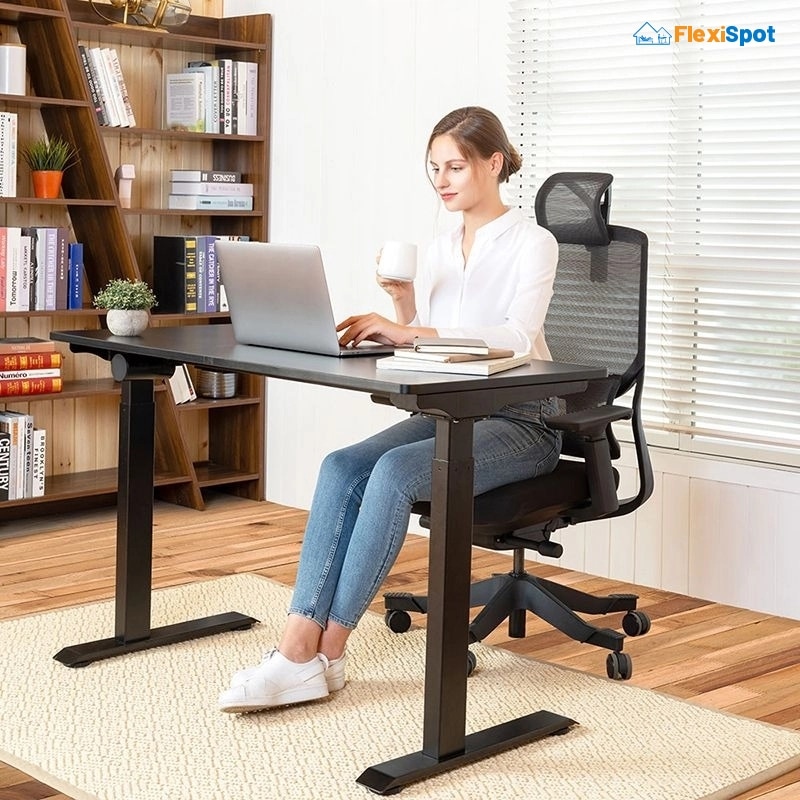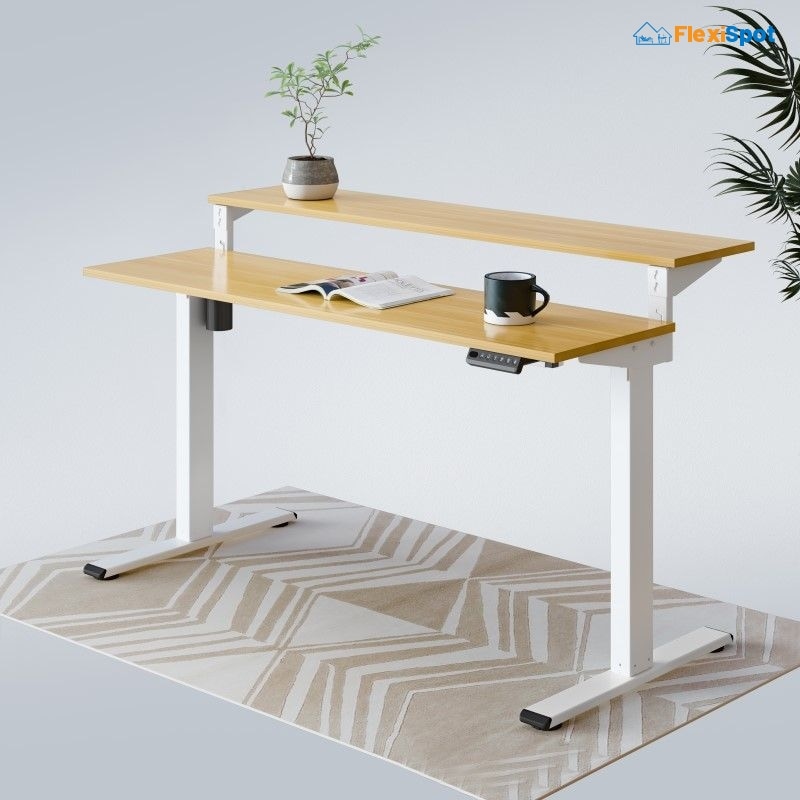The average person spends up to 1,700 hours at the computer every year. That’s already about 70 days straight. If your job requires more computer time than average, you can expect that number to go up to about a 100. Imagine spending almost a third of the whole year just sitting at our desks!
When we have to spend so much time working, most of us will try to find the position that is most comfortable for us to sit in. After all, who wants to be uncomfortable while they work? What feels alright, must also be alright…right? In reality, not so much.
Failing to take workplace ergonomics into consideration when positioning yourself at your desk can have some pretty long-lasting negative effects.
But what is ergonomics in the workplace? And why is it so important?
What Is Workplace Ergonomics?
Ergonomics is defined as the study of people in their workplace environment. To be specific, an ergonomist will study how work can affect the worker, and thus make modifications in the environment or in the work itself to make sure it suits the worker.
In a capitalistic society, people’s needs are often overlooked in favor of maximizing their work output, but the field of ergonomics puts workers’ needs first and adjusts everything around them to suit the worker. The goal there is to reduce the risk of injury and discomfort while working.
That is: the employee becomes the top priority.
There are three main domains of ergonomics that must be taken into consideration: physical, cognitive, and organizational. Let’s look over each of these in detail.
Physical Ergonomics
Physical ergonomics, as the name suggests, has to do with the physical, and physiological needs of workers in the workplace. That is, the needs of humans in regard to their anatomy and physical activity.
In the workplace, this would translate to the concern around musculoskeletal or neuropathic disorders that stem from, for example, staying seated for long periods of time in uncomfortable positions. Improving the workplace in this regard can have some serious benefits, from improving productivity and employee engagement as well as job satisfaction, since employees will not be as tired after a day of work as they may be otherwise.
Cognitive Ergonomics
This sort of ergonomics has to do with mental processes such as employees’ memory, motor responses, perception, and reasoning. It is important, not just because of the mental load that employees have to take during the work day, but also because it can affect their interactions with other people.
Organizational Ergonomics
Organizational ergonomics has to do with optimizing the systems in place that define how employees go about their workday. This has to do with things like organizational policies, structures, and processes.
For the most part, when we talk about ergonomics, we mean physical ergonomics in the workplace. That is, the physical setting employees are working in to make sure that their health is not affected by the work they do.
While ergonomics is mostly in the hands of employers, there are plenty of ways workers can manage their workplace ergonomics as well. Many people are self-employed or working remotely, and thus, they have to manage their workspaces on their own.
But why is ergonomics so important, anyway?
The Importance of Ergonomics
Protecting Health
The most obvious upside to good workplace ergonomics is the physical benefit.
We’ve already talked about the fact that ergonomics is good for preventing musculoskeletal or neuropathic disorders. On the flip side, bad working conditions can result in these things.
Many of us would know the feeling of fatigue, discomfort, and pain after a long week at work. While for some, this may mean nothing and can be fixed by a night of rest, for others, these could be the first signs of long-term trouble.
Reducing Costs
Musculoskeletal disorders are very costly – not only in terms of health, but also in terms of your finances. Your wallet isn’t going to be very happy about all the money you have to spend trying to fix the problem.
Good workplace ergonomics results in about a 60% decrease in musculoskeletal disorders. This, in turn, reduces the cost of compensation, lost workdays, and labor costs. Even for businesses, ergonomics shows clear advantages.
Improved Productivity & Quality
Good ergonomics results in better comfort at the workstation. This means that the workstation promotes efficiency and productivity, allowing workers to perform their tasks much better than they would if ergonomics were not taken into consideration.
As a result, employees tend to do much better-quality work. Because poor ergonomics results in fatigue and frustration, many employees may find that the job that they are tasked with becomes too exhausting for them and they may not be able to perform it as well.
Improved Engagement
When a company makes an effort to improve working conditions with the employees’ physical and mental health in mind, it also improves their morale and satisfaction. This makes employees appreciate the organization they are part of and become more driven to do their best at their jobs.
Improving Workplace Ergonomics
There are plenty of things you can do to improve workplace ergonomics. Good posture is one of these things. There is no way to emphasize how important posture can be. It involves more than just finding a comfortable position or what ‘seems alright’, and has to do with finding a position that is actually beneficial for you.
Good posture involves having a desk at the right height, that keeps your back, neck, arms, and wrist in the correct position.
It is also important to move around often. Many people end up spending the entire work day just sitting at their desks, staring at the computer screen. This is extremely unhealthy and can put unnecessary pressure on your shoulders and legs.
Taking breaks from tasks that involve straining your eyes is also imperative. Spending too much time looking at the screen can fatigue your eyes and even damage them in some cases. If your monitor has a poor resolution or a flicker, you should get that replaced. Ideally, you’d want a monitor that has reduced glare. Some computers have the option to filter out blue light on the screen, which can help with reducing eye strain.
There are plenty of ways you can avoid these issues. One option is to get good, ergonomic furniture that is designed with your safety in mind.
Vici Duplex Standing Desk
Flexispot has always been dedicated to providing ergonomic solutions for the workplace. The Vici Duplex standing desk is one such option.
This desk has a unique, one or two-tier working space, that you can shift around depending on how you choose to work. You can keep your computer screen on the second tier while working to meet your eye level and avoid straining your neck, or you can have two people working at the same desk at different tiers.
You can also set it at one tier only when working on your own. The dual zone height adjustment allows for greater versatility and makes working easier for everyone.
In the single-tier mode, there is a greater workspace for tasks that require more space. This dual zone adjustment option allows you to work at home with your kids, or to meet your own requirements in more varied ways.
The desk also comes with adjustable tubing that moves up and down, thus allowing for height adjustment. The tubing is made of powder-coated steel, and thus resists any scratches or stains. It also ensures stability at the highest settings and makes sure you can work peacefully without worrying about the weight on your tabletop, or unsteady desks.
There is also a control panel that allows you to save 4 height presets, so you don’t have to adjust the height to the right setting every time. It also makes the process of working while standing or sitting easier.
The desk also had adjustable feet, which helps in case the surface it is placed on is uneven. This could result in a slanted desktop, which can be uncomfortable to use. The leveling glides along the bottom can help fix the issue and stabilize your desk.
The desktop also has a pressure-sensitive height adjustment option. When you press down on the table, it senses the downward pressure and automatically retracts by an inch and a half. Then, the height locks. At any time, if you need to adjust the height of your desk, you can do so without using the control panel. This also makes it much easier for you to find the right setting in case you need smaller adjustments.
Flexispot’s products are designed with workplace comfort in mind. Head over to their website and find out more!




